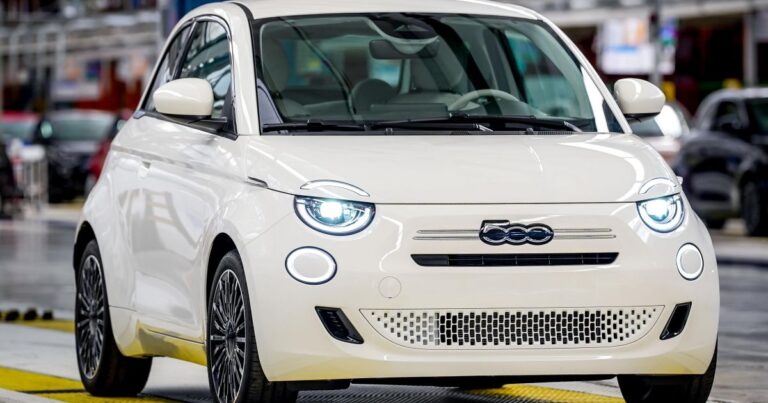
I’ve always been curious about motorcycles—but not because I wanted to cruise the open highway or collect chrome. My gateway was electric. Specifically, I wanted to test ride BMW’s CE 04 electric scooter—an ultra-modern, zero-emissions two-wheeler that looks like it came straight out of a sci-fi movie. But to do that, I needed more than curiosity. I needed skills. I needed a license.
So I signed up for the Motorcycle Safety Foundation (MSF) Basic RiderCourse, hosted at the Harley-Davidson Riding Academy in Villa Park, Illinois. I figured it would be a weekend of learning to ride. What I didn’t expect was how much I’d learn about myself—and how much fun I’d have in the process.
Before the First Ride


Like any good system, the MSF course doesn’t just throw you on a bike. Before even setting foot on the range, you’re required to complete a three-hour online eCourse, focused on theory, safety, and riding fundamentals. It’s self-paced but mandatory—and can’t be done more than 30 days ahead of your first session, or you’ll have to redo it.
You also need an Illinois M-Class Learner’s Permit to participate—unless you’re already licensed in another state. This is non-negotiable. The State of Illinois doesn’t offer waivers for the road test either, so everyone in the course is there to genuinely prepare for a DMV exam. Luckily, I aced the exam on the first try even though I heard the failing rate is quite high. But spend a week reading the book, do some online quiz tests and you’ll be fine.
Day One: From Nerves to Neutral


I showed up to class feeling both excited and more than a little nervous. I had never ridden a motorcycle before—not even a dirt bike. And when I first laid eyes on the Harley-Davidson Street 500, it felt massive. This wasn’t some friendly little scooter. It was a legitimate machine, with weight, presence, and power. For someone with zero experience, just sitting on it was intimidating.
Our instructors—certified RiderCoaches following the MSF curriculum to the letter—welcomed us with a casual classroom session inside the dealership. It was three hours of rules, risk management, group discussion, and basic road strategy. Nothing flashy, but it laid the groundwork for what was coming.
We also had a bit of time to check out some of the Harley bikes on the floor. Yes, there was a touch of salesmanship—but honestly, sitting on a few new Harleys was more fun than I expected. It made the whole thing feel less like a course and more like entering a new world.
Day Two: The First Clutch Pull


This was the real deal: our first day on the bike. From 8 a.m. to 5 p.m., we lived in the parking lot—what MSF calls “the range”—where cones, chalk lines, and stopwatches became our second home.
After a quick safety briefing and gear check, we were introduced to the Street 500 again, this time as our training bike. It’s specifically designed for beginners—with lower suspension, beginner-friendly throttle tuning, and protective crash bars—but it’s still a big bike for a beginner. Especially for the smaller students in the group, stability and comfort were definite challenges. Even I found the clutch tricky at first. It took me a while to feel where the friction zone was, and several stalls later, I finally began to figure out how to feather it properly. It felt awkward, even unnatural.
But that’s the point. The MSF course is designed to meet you where you are. And with each riding exercise, my confidence began to catch up with my enthusiasm. Every session built gradually on the last:
- First, it was just starting, stopping, and using the friction zone
- Then came shifting, basic cornering, and throttle control
- Eventually, we progressed to lean initiation, tight turns, and quick stops
These were broken up by frequent “Roadbook” breaks—chances to rest, hydrate, and chat with your classmates. There was no rush, no pressure to perform. Despite the time management (yes, they do use stopwatches to stay on schedule), the pacing never felt unfair. It was structured in a way that let the basics sink in while giving each student a fair shot at mastering the fundamentals.
By the end of the day, we weren’t just learning—we were riding. Not well. Not confidently. But we were doing it. And that’s a huge leap from where we started.
Day Three: Ride Like You Mean It


If day two was about understanding how the bike worked under you, day three was about preparing for the road ahead—both literally and figuratively. This was the most important day of the course, and it felt like it. The curriculum became more advanced, more realistic, and more mentally demanding. But by then, something had shifted: the tension in the group was gone. Everyone seemed looser, more talkative. The nervous laughter from day one had become camaraderie. We had started to feel like riders.
We began the morning with some review exercises—tight turns, slow-speed clutch control, basic cornering—and from there, we moved into scenarios that mimicked real-world road situations. It wasn’t just about maneuvering anymore; it was about decision-making. How fast do you brake in a corner without losing traction? What do you do when a car cuts into your lane? How do you react when you suddenly have to swerve?
These weren’t hypotheticals. We did them—again and again—on a course set up with cones, curves, and surprise stop cues. The Street 500, which felt so intimidating just 48 hours earlier, now felt like something I could actually control. I wasn’t just surviving the exercises—I was learning to ride with intention.


One of the most revealing drills was the quick stop and swerve maneuver. You accelerate to a moderate speed, then a coach signals either a hard stop or a fast directional swerve. It’s meant to simulate what happens when a car brakes in front of you or an obstacle appears in your path. At first, I overthought it—grabbed the brakes too hard or didn’t lean enough. But eventually, something clicked. My body started doing what my brain had learned. Sure, there were some mishaps, but this is why the safety bars help a lot.
Another drill that stood out was braking in a curve. You’re riding through a gentle turn, and halfway through, you have to brake smoothly while still leaned over. It teaches you to manage weight transfer, balance, and throttle control all at once. It’s harder than it sounds, especially when your instincts scream “stand the bike up!” But again, with practice and coaching, you start to trust the process—and yourself.
The instructors, who had been great throughout the course, really came into their own on this final day. Their feedback was more personalized, more targeted. One coach noticed I was still hesitating slightly before leaning into sharper turns. He pulled me aside between drills and gave me a quick tip about head position and throttle stability. Just a few words, but they made a difference. The next lap around the curve, I felt smoother, more in sync with the bike.
And then came the test.
The MSF Skill Test consists of five scored exercises:
- A cone weave
- A quick stop
- A turn from a stop
- A U-turn in a box
- A swerve maneuver
- And a final cornering pass
It’s pass/fail, but every move is graded. You get points deducted for hesitation, running wide, putting a foot down, or missing the mark. Watching your classmates go before you, it’s easy to psych yourself out. But the instructors give you one last pep talk: “You’ve already done every one of these exercises multiple times. You know what to do.”
And they were right.
My test wasn’t perfect—I dropped a point on my U-turn for coming too close to the line—but I passed. And so did most of the class. The smiles were bigger than ever. One student who had struggled with the clutch on day two let out an actual cheer after finishing his swerve. We’d all been rooting for him.
After the test, the coaches handed out completion cards and talked us through the DMV scheduling process. If you passed the course, you were eligible to return to the dealership on a scheduled day and take the official Illinois DMV road test on the same bike you trained on. No tricks, no surprises—just familiarity and a final step toward your license.
But what mattered most was that feeling: the satisfaction of having learned something that once felt impossible. We didn’t just learn to ride—we became beginner riders.
Was It Worth It?


The folks at MSF gave us a coupon for this course which costs $350, but I told them the review will be purely based on my experience and what I “feel” during the class. If you’re paying for it, I can say with confidence that this is one of the best investments you can make if you want to ride bikes. Not just in terms of learning a new skill, but in confidence, discipline, and perspective.
Most importantly, the course gave me a solid foundation for eventually riding the kind of electric bikes I’ve always wanted to test. The BMW CE 04 is still on my radar—but now I’m ready for it.
What You’ll Learn: MSF’s 14 Core Riding Exercises
- Motorcycle Familiarization – Learn the controls, posture, and safety checks
- Friction Zone Control – Master slow-speed clutch work
- Starting & Stopping – Learn throttle-brake coordination
- Shifting & Stopping – Practice clean gear changes and halts
- Basic Skill Practice – Fine-tune low-speed handling
- Initiating Lean – Understand body position and steering
- Quick Stops & Tight Turns – Master control under pressure
- Stopping Distance Demo – See how speed impacts safety
- Limited-Space Maneuvers – Learn U-turns and balance
- Stopping in Curves – Manage braking while leaned over
- Curve Judgment – Navigate multiple turns with precision
- Lane Changes – Practice moving safely through traffic
- Obstacle Crossing & Swerving – Learn evasive maneuvers
- Final Skill Practice – Combine everything in one session
Gear Requirements: Don’t Show Up Unprepared
The MSF and state guidelines are clear: you need to wear full protective gear or you won’t ride. This includes:
- A DOT-approved helmet
- Eye protection (visor or glasses)
- Over-the-ankle boots
- Long sleeves and full-length pants
- Full-fingered gloves (preferably motorcycle-specific)





